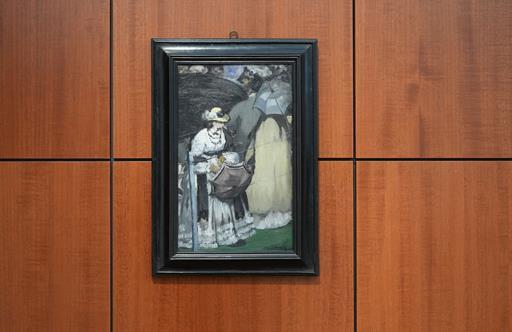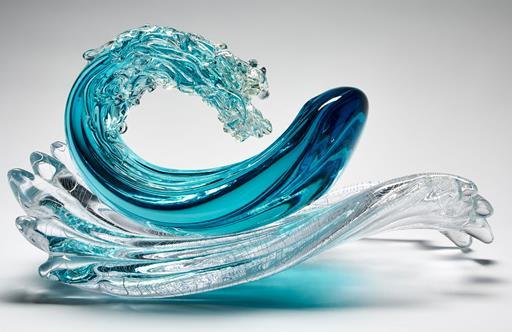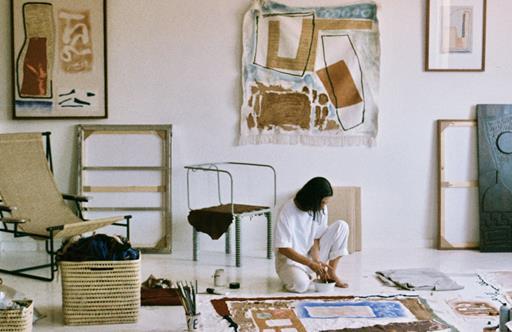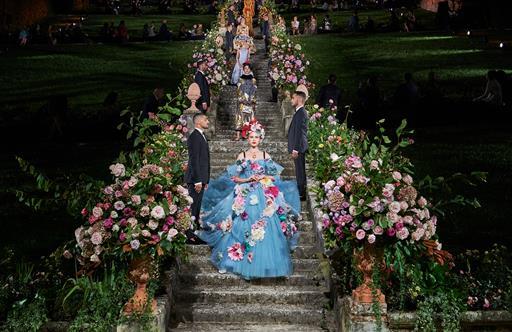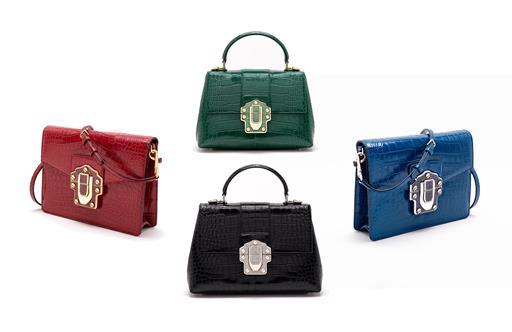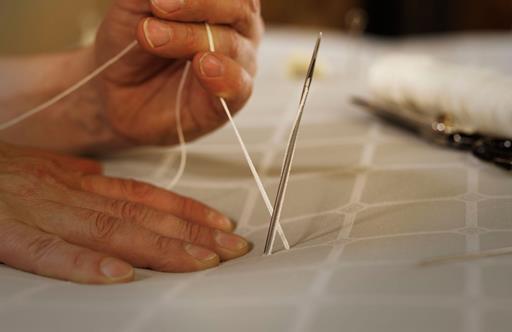Naoto Who?
You’ve likely purchased, sat on or marvelled at the intuitive simplicity of one of Naoto Fukasawa’s designs – all without knowing it. But then, the prolific Japanese designer prefers to remain anonymous and let his work do the talking.
Few contemporary designers have had as great an influence on the objects in our homes as Naoto Fukasawa. He may not have the celebrity of, say, Jony Ive, the man who shaped Apple, but he is widely regarded – not least by Ive himself – as one of the most important, most influential designers of our time. The two have known each other since the 1990s, when both worked on the design of the Twentieth Anniversary Macintosh, a limited-edition desktop computer launched in 1997 to mark two decades since the founding of Apple (retailing at $7,499 – for just 32MB of RAM – it was not a commercial success). So it’s no coincidence that Ive asked him to dream up the custom-made furniture for Apple’s Norman Foster-designed corporate HQ in Cupertino, California – nor that the Hiroshima dining chair that Fukasawa designed in 2008 is the seating of choice in the staff cafe and visitor centre at Apple Park.
 Fukasawa’s beechwood Hiroshima chair, designed for Maruni in 2008 (Photo Yoneo Kawabe)
Fukasawa’s beechwood Hiroshima chair, designed for Maruni in 2008 (Photo Yoneo Kawabe)
“I think he’s really underknown, at least outside the design community,” says Colin Fanning, who is curating the first major museum exhibition of Fukasawa’s designs outside Japan at the Philadelphia Museum of Art this winter (the designer will receive the museum’s Collab Design Excellence Award at its opening). “He’s very much respected and his work is known, though not his name. But to me, that is illustrative of his approach to design. There’s a kind of humility to it,” muses Fanning. “He really prioritises the idea of designing an object so that it ‘finds a fit’ – an expression he uses a lot – in terms of its function and the broader environment it’s intended for. There’s a self-effacing quality that’s unusual in contemporary design, in which bigger and brighter and louder seems to be the modus operandi now.”
Born in 1956, Fukasawa grew up in Kōfu, the historic capital of the Yamanashi Prefecture, about 150 kilometres west of Tokyo. His parents owned a small electrical engineering company, and the family home was upstairs above the factory. Back then, he admits, “I didn’t know much about what design meant, but I think I always wanted to be involved in making beautiful things.”
So he trained as a product designer at Tama Art University and, upon graduating in 1980, joined Seiko Epson, where he was assigned to the digital watch development team and worked, among other things, on LCD panels and tiny televisions that could be worn on the wrist. Within a decade, however, he had moved to the US. “America was a place I longed to be at that time,” recalls Fukasawa. “Perhaps I admired the breadth of mind that produced technology rather than design, and I wanted to experience it.”
He found a job with the San Francisco practice ID Two, which grew into the global design company IDEO, and, in 1996, he returned to Japan to set up its Tokyo office. It was here that Fukasawa developed what one might call his philosophy of design: namely, that it should be “without thought”. “People think that design is something that appeals to their emotions,” he explains. “But people should be linked to things unconsciously. This ‘unthinking’ state is what makes actions smooth. If we think too closely about what we’re doing, our actions become awkward.”
By 2003, he had founded his own studio, designing intuitive-to-use consumer products, among them mobile phones (for Infobar), the N310 notebook PC and a laser printer for Samsung, and a range of inexpensive appliances for Muji, on whose advisory board he still sits.  Fukasawa’s Cha teapot and kettle for Alessi in 2014/15 (Photo courtesy of the Philadelphia Museum of Art); 2002’s Muji rice cooker complete with an integrated spatula (photo courtesy of Muji)
Fukasawa’s Cha teapot and kettle for Alessi in 2014/15 (Photo courtesy of the Philadelphia Museum of Art); 2002’s Muji rice cooker complete with an integrated spatula (photo courtesy of Muji)
These included a toaster with rounded corners intended, Fukasawa says, to “offset the right angles of the toast itself” and because “they’re the part that comes closest to its users” and no one wants to hurt themselves on a sharp point. He took a similar approach to the Muji kettle and rice cooker, which has an integrated spatula so it’s always to hand. The lid itself has also been deeply thought through. “It’s a micro-consideration,” he concedes, “but it protrudes” – almost imperceptibly, so that it’s easier to lift off. “This is not something you’ll find with other appliance brands,” he comments. Still, it’s a detail that informs how you handle it, so, he says, “It becomes ingrained in the actions of our daily lives and that becomes a point of communication with people who like Muji.”
The most influential of Fukasawa’s early collaborations with the brand, however – indeed the first piece of his to be acquired both by New York’s Museum of Modern Art and London’s Victoria and Albert Museum – was the CD player he designed in 1999, inspired by a domestic extractor fan. Jony Ive has acknowledged it as an influence on his own work for Apple. “Naoto’s wall-hanging CD player was such a resonant and significant product to so many people, including us as a design team. It was a curious thing because it was a celebration of the actual media,” he told Axis magazine in 2019. Think about its doughnut-shaped form and the click wheels used to control iPods, and it’s evident that the T3 pocket radio that Dieter Rams designed for Braun in 1958 was not its only forebear. (Fukasawa also acknowledges Rams as an influence. “I have great respect for [Charles and Ray] Eames. And George Nelson, who influenced them,” he adds.)
 Fukasawa’s iconic wall-mounted CD player – created for Muji in 1999 – is part MoMA’s permanent collection (Photo Hidetoyo Sasaki)
Fukasawa’s iconic wall-mounted CD player – created for Muji in 1999 – is part MoMA’s permanent collection (Photo Hidetoyo Sasaki)
“If a product is well designed, your body will already know how to use it,” Fukasawa says, reiterating the long-held principle that form follows function. “The design will dissolve into a behaviour, allowing you to focus your mind on something else.” Take, for example, the humidifier for the Japanese homeware brand Plus Minus Zero that he designed in 2003. Also in the collection at MoMA and still in production, it’s a beguilingly simple doughnut-like object of shiny tactile polycarbonate, concealing an almost silent fan function that wafts vapour into the air for up to 18 hours, at which point its water tank runs dry and it switches off automatically. Just don’t call it minimalist. “To describe [something] with a generic term like minimalism doesn’t do it justice,” he says. “Minimalism is a form composed of a minimum of elements in complete harmony and just enough functionality, never too much.” But it involves “maximum effort. It is extremely difficult to achieve!”
He designs on a larger scale, too – even once a prefab cabin for Muji, a 21st-century take on Jean Prouvé’s collapsible house complete with a cast-iron stove, a bed, a tiny kitchen and a large square bath. Lately, however, he has been focusing on ergonomic furniture. “Our bodies are more honest than our minds,” he says. Our bodies don’t tolerate discomfort, however aesthetic – “and [design’s] responsibility for human health is huge”, comments Fukasawa. Last year, for example, saw the launch of the Asari chair, a range he designed for the US office-furniture giant Herman Miller and which now furnishes his Tokyo studio.
Before the pandemic, he explains, there was a distinction between domestic and office chairs. They were “very clearly” intended for different purposes, he remarks. Home working changed all that. No one wanted to look at an office chair in their living space, and working from a dining or lounge chair did no one’s back any favours. “We needed to think about these two different worlds and how to connect them,” he says. (As curator Colin Fanning notes, “Fukasawa is very attuned to contemporary shifts in habits and work.”) His solution was a chair that is both sufficiently supportive for screen work yet soft and roomy enough to relax in. Crucially, too, it “looks good in a home environment”.
 The 2005-designed ceramic Bunch vase for B&B Italia – inspired by ikebana, the Japanese art of flower arranging (Photo courtesy of B&B Italia)
The 2005-designed ceramic Bunch vase for B&B Italia – inspired by ikebana, the Japanese art of flower arranging (Photo courtesy of B&B Italia)
Named after a species of saltwater clam (the one found steamed in sake in izakayas across Japan), the shape of whose shell inspired the contours of the seat and gradated panels that form the back, the chair differs from most office models in the way its base, body and arms are all one colour and in the shades it comes in: peacock blue, yellow, a reddish purple and what they call Etruscan red – as well as more corporate greys. “Everything in our lives is integrated now,” he says, stressing that design is essentially an ever-evolving process of refinement. “I don’t design anything that is completely new. I’m more interested in redesigning the good things. That’s how you make happiness.”
It’s more obviously comfortable than Chair, the upright armless sculptural seat he cast from acrylic glass or had carved from a single log of redwood in editions of 12 for Vitra in 2007 (Sotheby’s sold one last year for $15,120). For not everything Fukasawa designs is intended to sell in large numbers. Indeed, he’s no stranger to luxury. In addition to the interiors of Issey Miyake menswear stores and porcelain for Sèvres, he’s designed ranges for Alessi, B&B Italia and editioned pieces for Paris-based Galerie Kreo, notably a string of beads, a €50,000 table and a set of coat pegs, a 64x9cm oak plank into which have been hammered five precisely angled aluminium nails, each to exactly the same depth. It could not be simpler, yet there is a sort of Zen perfection in its plainness and utility.
 Shelf X, a vision in all-white Corian, created for B&B Italia in 2005 (Photo courtesy of B&B Italia)
Shelf X, a vision in all-white Corian, created for B&B Italia in 2005 (Photo courtesy of B&B Italia)
He recoils, however, at the idea that someone might buy such a thing just because of who designed it. “In an age of overabundance,” he warns, designers should think carefully about whether what they’re designing really needs to be made in the first place. Many consumers, he says, are too impressed by names – and that alone should not inspire them to buy something. “Design should be anonymous.” And things should be valued for their “universal value, not their form!”
Naoto Fukasawa: Things in Themselves will run from 13 December 2024 to 20 April 2025 at the Philadelphia Museum of Art
Portrait of Naoto Fukasawa courtesy of the artist


